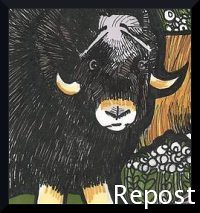 It's beginning to look a lot like spring in Maryland, which means that the suburbanites will be out in their yards clearing dead brush and leaves, sculpting unkempt hedges and painstakingly homogenizing their lawns. I wrote this post last May, asking why lawns are treated like an extension of the carpet.
It's beginning to look a lot like spring in Maryland, which means that the suburbanites will be out in their yards clearing dead brush and leaves, sculpting unkempt hedges and painstakingly homogenizing their lawns. I wrote this post last May, asking why lawns are treated like an extension of the carpet.
If I have to see another white middle-aged actor stroking "his" lawn, I'm going to (insert drastic measure here)!
Ortho's latest pesticide claims it will kill over 100 specific insect types on contact.
The problem is, there are a lot of invertebrates that keep a natural lawn in great shape. So how can the pesticide differentiate between the pests and the helpers?
It can't.
Without these organisms, our plants would die. Worms aerate and fertilize the soil, diazotrophs fix nitrogen for plants absorption, bees and beetles spread pollen from flower to flower, and termites (yes, termites) redistribute nutrients from dead plant material back into the ecosystem.
So, natural soil depends on these "pests."
In fact, the entire world depends on the activities of invertebrates. They are the ancient ones; we depend on them, not the other way around.
We are here because they have been here, for hundreds of millions of years.
But don't take my word for it. Take his:
I want to know why lawns have to be so pristine and free of variation. Our aesthetic tastes value pattern and variety above all, so why the vast ocean of non-native invasive grasses?
To waste water?
To cut biodiversity?
To dump excess artificial fertilizers into streams, contributing to the eutrophication of our rivers, lakes and bays (the Chesapeake, for example)?
To display a primitive prowess to others in the ability to control the environment?
Is it a control issue?
Or is it a display of affluence, a show of expendable income?
Does the green of your lawn represent the green in your wallet?